An event press release is a specialized press release that aims to announce and promote an upcoming event. It differs from other press releases in several key ways.
Read on to discover:
- how to write a press release for an event
- how to make event press releases more engaging and compelling
- how to distribute event press releases
If you’re in a rush, Prowly offers press release templates that you can use to easily create your own in a format that journalists expect to receive.
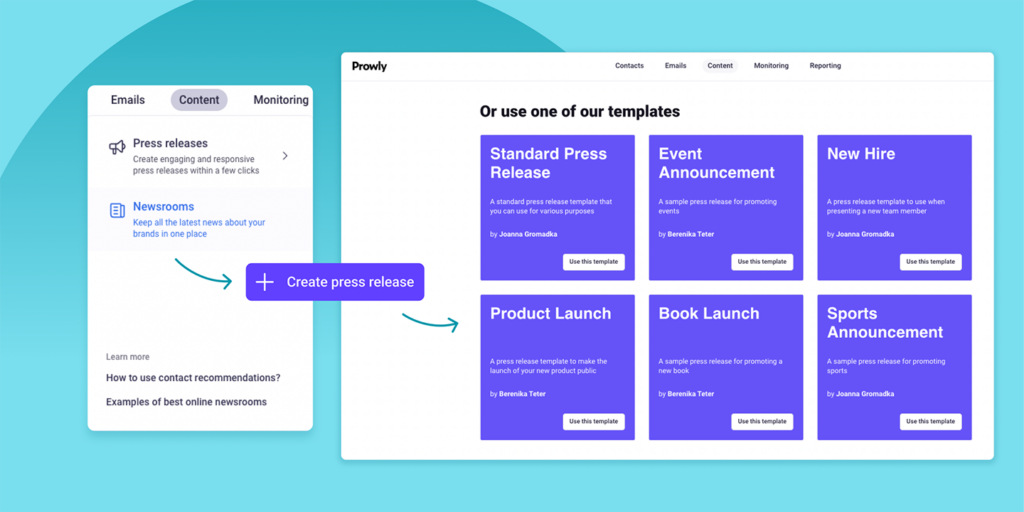
Prowly also lets you find relevant journalists and send out your press release to them directly from the platform.
Send your press release to the right journalists
A key factor in getting your press release picked up by the media is pitching to relevant journalists and bloggers—people who are interested in writing about your event.
An easy way to identify relevant media contacts interested in your event is by using a media contacts database, like the one in Prowly.
With the “search by keywords” option, you can find journalists who wrote about events similar to yours in the past.
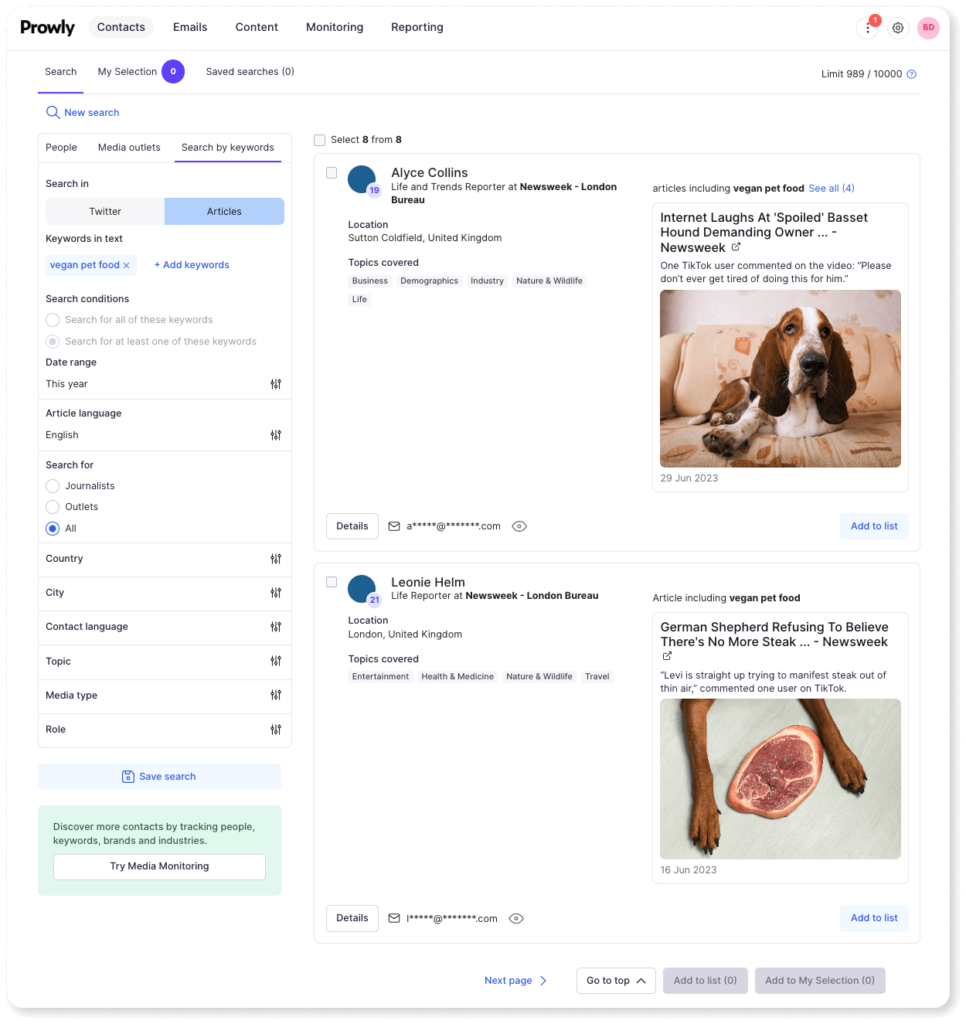
You can further refine your search by filtering where a journalist is located or what topics/industries he or she is interested in. This is a much better approach than the “spray and pray” method, hoping that someone will want to cover your event.
If you’re seeking more exposure for your press release, explore these 10 ideas on how to effectively promote a press release.
Types of event press releases
There are 4 common types of event press releases:
1. Information about upcoming closed events where we invite journalists or announce they will take place
2. Information about closed events that have already taken place
3. Information about upcoming open events with the intention of using the media to invite their audiences (e.g. nonprofit events)
4. Information about open events that have already taken place
How to write an event press release
If you’ve written a press release before, you’ll quickly realize that an event press release is similar. There are, however, a few key differences you have to keep in mind.
Use the proper release format
An event press release follows the same format as any other press release. What matters is what you include in each section.
Whether you’re using a template or creating one from scratch, make sure to include these elements in your press release:
- Headline – briefly summarize the event in an attention-grabbing way
- Lead – a longer summary of your event
- Body – elaborate on the details provided in the lead
- Date of publishing – ensure the event press release is timely
- Boilerplate – a short description of you and/or your business
- Contact information – contact details of the author, company, and/or the PR agency
👉 Want to make your press releases look better? Check out our latest article “How to Design a Press Release (w/ Tips & Examples)” for some helpful tips!
1. Write a compelling headline
Your headline should be concise, attention-grabbing, and reflect the event’s main theme or news value.
Recipients of your press release are going to scan the headline in a fraction of a second, so this is the place to make your point.
Convincing media contacts that your event is newsworthy can be a challenge when you have a limited number of characters to work with, so focus on the main takeaway.
2. Craft an engaging lead
As a de facto extension of your headline, use your subheader or lead to expand on what makes your event worth the time and attention of media contacts.
In the first paragraph, provide a concise and engaging summary of the event. Answer the who, what, when, where, and why questions.
3. Provide the details of your event
In subsequent paragraphs, elaborate on the event, including its purpose, significance, and any notable features or guest speakers.
Include information about the date, time, location, and any relevant background about the event’s history.
Protip: This is a press release, not a copy for an advertisement. Stay away from salesy language and remember that you’re trying to ignite interest in a story, not a product or service.
4. Include quotes
Add quotes from key organizers, sponsors, or speakers. Quotes add credibility and a human element to the press release.
5. Include extra information
Share details about any special guests, performers, or noteworthy activities planned for the event.
Mention any sponsors or partners involved in the event.
6. Add your boilerplate
Include a short paragraph about your organization at the end of the press release. This is known as a “boilerplate” and provides background information about your organization.
7. Provide your contact information
Include a media contact person’s name, phone number, and email address. Make sure this person is readily available to answer media inquiries.
Tips from journalists
Before you write a press release about an event and then send it to relevant journalists, you should first answer a couple of questions:
1. Does the media outlet I’m addressing cover similar events?
2. Does the journalist that I’m addressing deal with my subject matter?
3. Will the journalist find all the info necessary to write a useful article for their audience?
4. What is the most important thing in my event press release, and will it be enough for the media outlet to publish it?
These few points do not exhaust the press release writing issue, but should at least help you get started.
Protip: If you like to invite a journalist to your event, you should also send them an actual invitation (besides the press release), clearly stating the date, time, and venue.
The most important insights in this article, though, come from the journalists I spoke to – each a recipient of dozens of press releases daily.
- Journalist A: Covering investments, construction, architecture, and real estate
- Journalist B: Local news, city life, and local government
- Journalist C: Lifestyle, fashion, beauty & cosmetics, and design
- Journalist D: Art and culture
Below are some of the things pointed out by the people to whom we send our event press releases and invitations. Let’s check how they define writing a good press release about an event:
1. Avoid “fluffy” type of writing (adjectives, praises, and exaggerations)
Journalist A: I like figures, facts, and sensible quotes instead of a bunch of adjectives and silly references.
Journalist B: You’re doing it wrong if you’re using a million descriptions like “an amazing, one-of-a-kind event that will forever be remembered.” The journalist, then, not only has a difficult time grasping the most important info about the when and where but also may be discouraged from looking hard to find it
Journalist D: When it comes to the language used, I strongly advise against using the so-called cool words as well as overusing capital letters. Even if the headline is interesting, the journalists will most likely not want to spend the time adapting your language to their standards.
2. Present solid facts that interest the press about your event
Journalist A: When I get a press release from an event where there were substantial talks on some issues, I would like to also get quotes on investments, trends, forecasts, etc.
When I read that “the market is growing” or “the future is bright” I begin to lose my will to live. When organizing a conference to which you invite journalists, I would also stay away from “We are happy to announce,” “It is our honor to…” or “With joy we…” When I plan to attend a conference I’m only interested in what will be talked about and who will do the talking.
Journalist B: When you send a press release to a city paper about a concert of a lesser-known band of a niche genre, other than just naming the music category (for example eco-hip-gothic rock), please list something known that the audience can compare it to. After all, this will be read by everyone.
Journalist C: If the event is really a new thing, something non-standard, it makes sense to cover everything from A to Z, starting with the things your reader will find the most interesting.
3. Send your press release to relevant media contacts
Journalist B: It is common practice that the capital city paper gets flooded by spam from a concert agency organizing events all around the country.
Journalist C: Every day, I get hundreds of emails from all kinds of sources and in my work, time is of the essence. I have just a few seconds to look through each, and the ones that irritate me the most are the ones that should not be there at all.
Working in the event department of a fashion magazine, I am not very likely to use your press release about a chicken beauty pageant or the grand opening of a new ceramic tile production line. It’s really crucial to check your contact database and only send out useful info.
Protip: Prowly’s media database has over 1,000,000 media contacts that you can use to find the most relevant journalists to send your press release to.
4. Add images and other supporting attachments
Journalist A: When it comes to grand openings, good pictures are key. We probably wrote about the venue before, so we have some knowledge about it, but a good summary is always welcome.
Journalist B: Putting just the name of the event, the date, and the link to a Facebook page description is extremely bad practice. If you didn’t feel like copying the info from your FB page to the email, you can bet that I have no interest in it either. Plus, I am not obligated to have an account on every social media site.
Journalist C: Attachments are incredibly important. They must be of appropriate size and format so that looking through them will not require time and effort.
5. Follow up correctly
Journalist C: Calling in your press releases is typically frowned upon and is generally treated like telemarketing. Journalists try to distance themselves from such PR pros. On top of that, it’s usually an intern without a clue who does the calling. It’s a little easier when you personally know the journalist but it’s still a better practice to send them a follow-up email instead.
Journalist D: There is one thing that we really don’t take kindly to. That is sending the same press release to all the email addresses at our office and repeating the process every couple of days. That will undoubtedly land you in the spam folder.
When you think about it, calling may not always be bad. Sometimes we get a poorly written press release, but later the PR department or an agency calls and clarifies or fills in on some info that for some reason was omitted. And it turns out that that’s exactly what we’ve been missing for the article.
Journalist B: If you decide to call, you should have it clear how to approach us, journalists, beforehand. Most calls I receive start with: “Hello, we sent you a press release about the premiere of XYZ. I just wanted to know if you got it. Is there a chance it’ll get published? Did you find it interesting?” It almost always starts like this.
Editors note: Read more about following up correctly in our post Following up on Your Media Pitch – How to Do It Right.
Event press release examples
Each event press release example below was created with Prowly’s Press Release Creator – a handy drag-and-drop tool for creating visual press releases that you can share with a simple link.
Networking event press release example
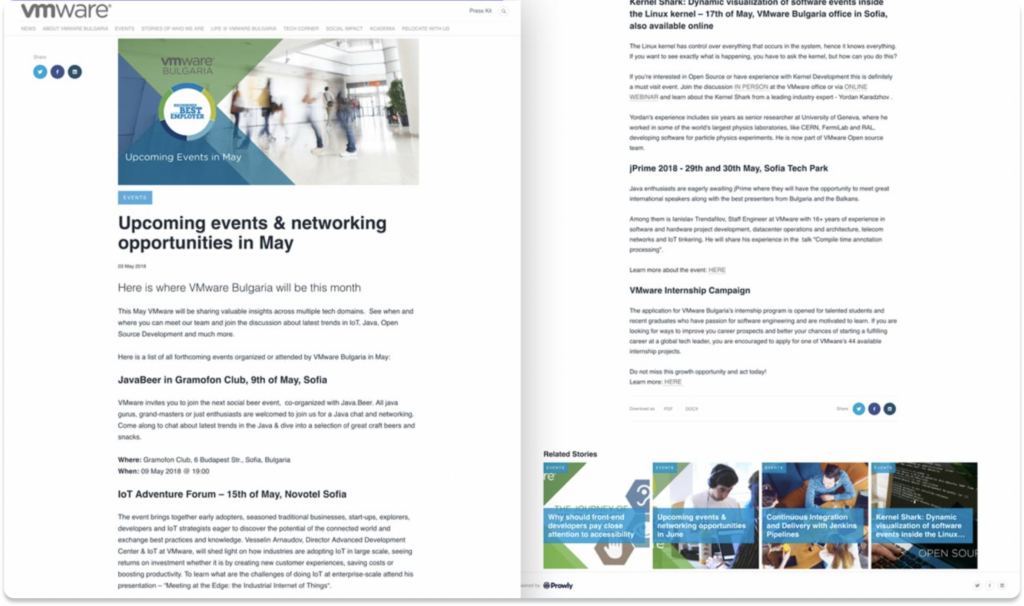
VMware Bulgaria announces upcoming networking events with this press release.
Music festival press release example
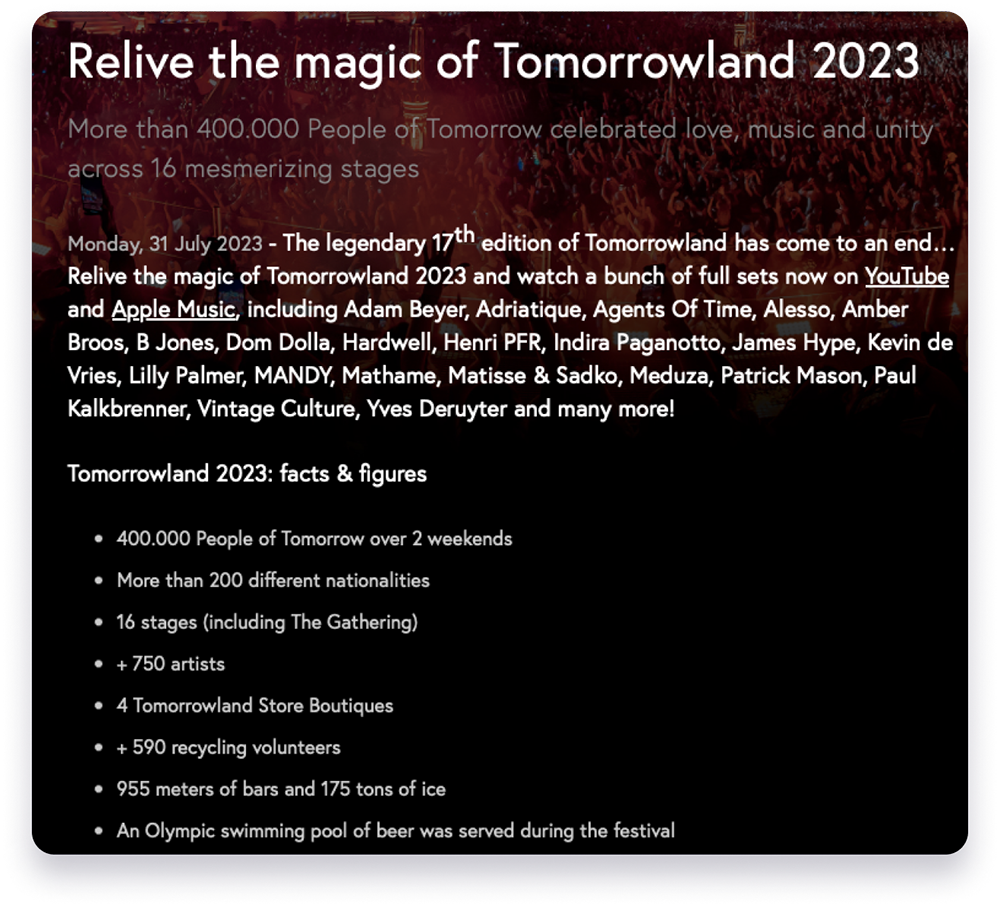
Looking tips on writing a music press release? Check out this complete guide: “How to Write a Music Press Release (with Examples & Templates).”
Sports event press release example
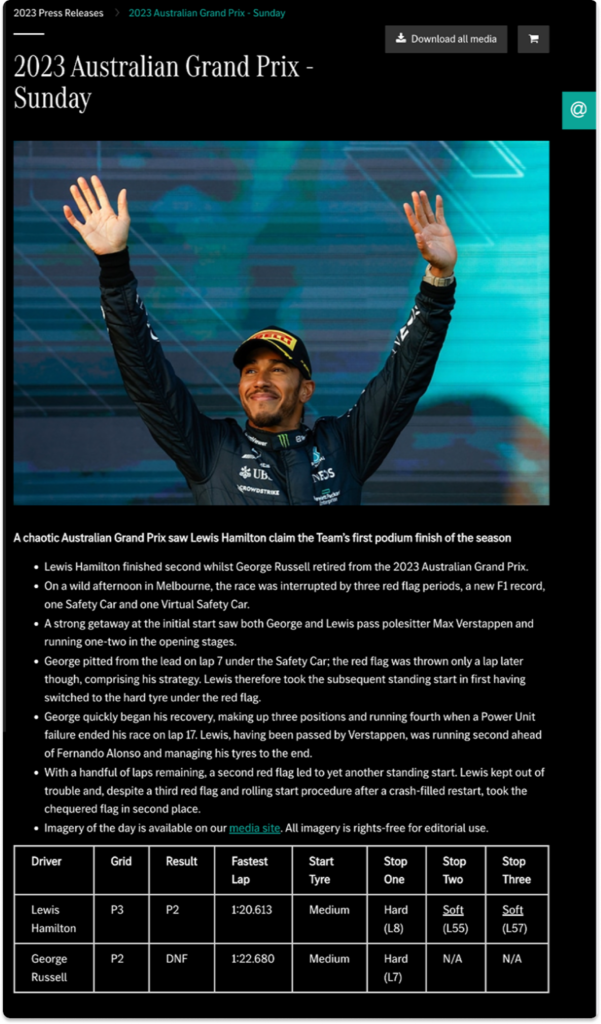
Discover how to craft a sports press release from scratch using this practical guide: “How to Write a Sports Press Release (with Example and Template).”
Need more examples of press releases? Check out our article “25 Press Release Examples by Type (Plus Free Templates)“.
Book launch press release example
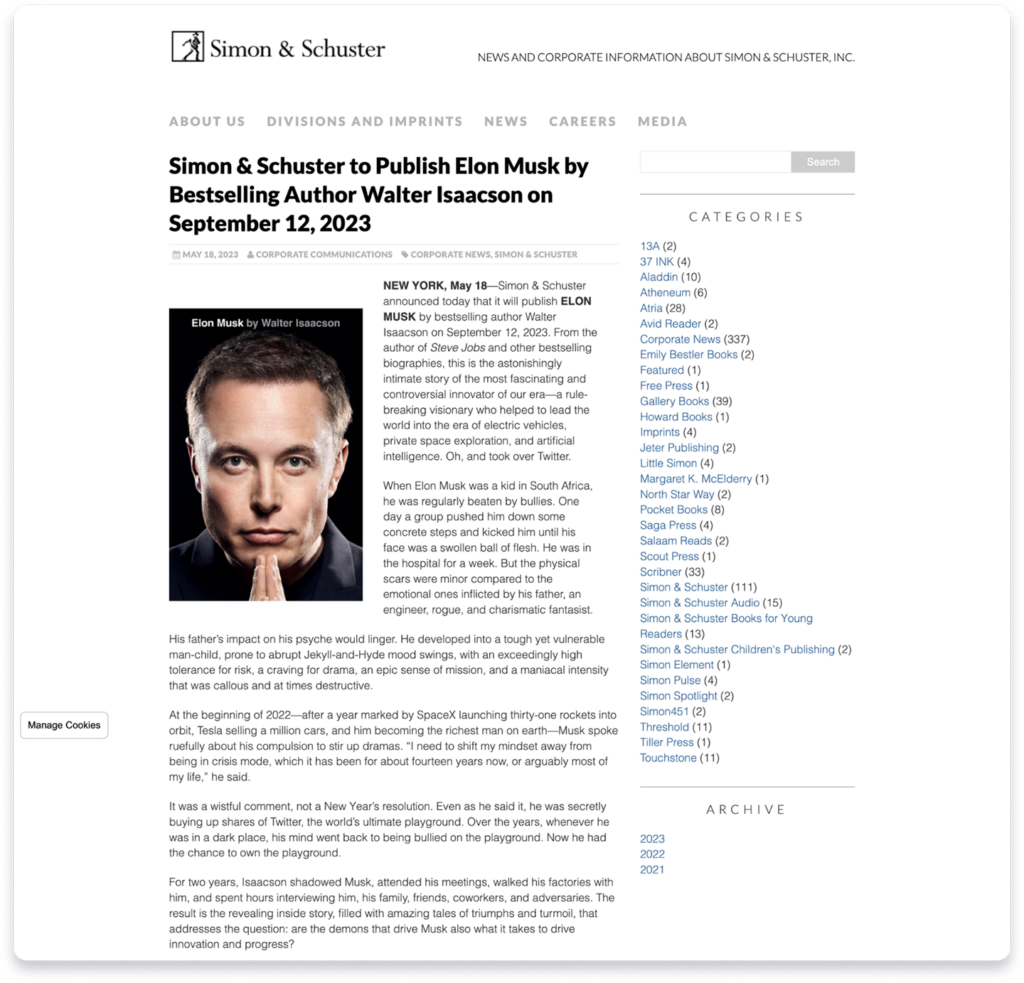
Learn the art of creating a book launch press release from scratch with this hands-on guide: “How to Write a Book Press Release (Example and Template).”
Event press release template
If you’re looking for a way to speed up the press release creation process, Prowly has multiple templates press release templates that you can use inside the platform.

The templates include all the most important elements to make sure your story gets noticed by journalists and results in media coverage.
Summing up
The first thought that comes to mind after reading this is that a big part of creating effective press releases is the ability to think critically about your event.
To truly sum up this article, though, I would like to share a piece of advice given to me by my first PR boss when I was starting out – “The key to success is to know and like the media. Getting to know the way they work, their office realities, and listening to their anecdotes about their experiences with PR pros.” Just like the ones shared above.

